Discovering Rome: Cittá del Vaticano
- soniamelodias

- Feb 27, 2019
- 7 min read
Updated: Mar 8, 2019
Going to Rome means necessarily visiting the autonomous state of the Vatican.
It's actually a country inside another country.
I know, it sounds a bit strange, but the fact is that this is an autonomous territory.
In the Cittá del Vaticano reside about 800 people and the Pope is the head of state, which means he owns the legislative, executive and judicial power.
The Pope is elected trough conclave, which is a kind of monarchy, because he governs until his death, but his position is not transmitted through his hereditary line ( because, theoretically, the Pope has no heirs), but rather by a kind of electoral process, the conclave.
It is here in the Cittá del Vaticano that you can find some emblematic sites that must be visited due to their cultural, artistic and historical content:
the Basilica di San Pietro ;
the Cappella Sistina ;
and the Musei Vaticani.
If you decide to visit the Cittá del Vaticano, it is best to start the tour very early in the day, because even with "Skip the Line" tickets, it is likely that you will have to face long lines.
Visiting a place like this, is most likely to have an enormous religious content for most people because this is, after all, the headquarters of the Catholic Church.
Despite this fact, the relevancy of this place resides in its artistic and cultural estate which is absolutely mind-blowing. I´ll admit that being an atheist has an influence in my opinion, but I´m also an art admirer and I appreciate culture and all things beautiful so being there was one of the most inspiring experiences of my life.
When you get close to the Basilica di San Pietro one of the first things that catch your immediate attention is the Swiss Guard. You won´t be able to avert your eyes because their uniform is colorful and picturesque. This is a group of soldiers whose mission is to protect the Pope.
The Basilica di San Pietro is considered the largest and most important representative building of the Catholic religion and, as such, is also the most distinctive. In this basilica we can find works of some of the greatest geniuses that mankind has known, such as Bernini, Raphael and Michelangelo.
As we enter the Basilica we can see one of Michelangelo's most famous works: La Pietà, which depicts Jesus dead in the arms of Mary, this sculpture is exposed behind a bullet-proof glass. It is quite impressive and quite an honor to be in the presence of such talent...
If you can imagine yourself in a place where everything fascinates you: the walls, the floors, the ceilings, the doors... and, of course, the sculptures, the frescos, the stained glasses, the paintings...
It is was completely impossible to pay attention to everything because the enormous quantity of people inside the basilica did not allow it.
The artwork we can see here is intoxicating. But we can also observe, at least I did, an almost inadequate opulence that makes us question the values that the Catholic Church claims to defend. In my opinion these treasures, which have an inestimable value, should not be exploited by a religion because they belong to Humanity as a whole.
In addition to all these works of art, the Basilica di San Pietro also provides us with the most spectacular view of the city. However, to be able to enjoy it, you have to go up to its Dome.
You´re basically faced with two alternatives on how to get there: pay or pay. No, I did not make a mistake, everything is paid here, and quite well, I might say! If you go up the stairs (551 steps) you have to pay 6 eur, if you go by the elevator (still have to climb 320 steps) you have to pay 8 eur. May I remind you that we had already paid 20 eur to enter the Basilica and the Museums, per person.

We decided to take the elevator, even though it was more expensive, because it was just too many steps to climb. There is a first level before reaching the Dome, but it really does nothing to rest your legs, because the true ascent only starts after that.
The stunning view that we can enjoy as we get to the top really compensates the unbearable pain in your legs from climbing the steps, believe me. Not only are you able to see the city, the river, the Piazza di San Pietro, the Musei Vaticani, the Castel Sant'Angelo and its bridge, as well as the lush gardens surrounding the residences of priests and bishops.
After descending from the Dome, we were on our route to the famous Musei Vaticani, finally!
Do buy "Skip the line" tickets online, because, otherwise, you will have to face terrible lines, the amount of people you´ll find here is unbelievable...
When you enter the museum you´re faced with a choice in terms of route, knowing that your journey will end at the famous Cappella Sistina: you have a long and a short way to get to it. The longest way to the Cappella Sistina takes about 3 hours to go through, but believe me it is completely worth it!
Having the opportunity to visit the Musei Vaticani and make the shortest way is foolish in my opinion, even for those who think of going back, because all that art, all that beauty deserves to be seen and reviewed over and over again... You can not avoid falling completely in love and being absolutely dazzled by the art that surrounds you.
Before beginning our route we passed a pleasant open area.
Each room you go through is a delightful surprise. You just can´t get enough!
I found this particular room fascinating, because I consider Egyptian art and culture both interesting and alluring, but also a little macabre because you get to be in touch with actual corpses, mummified bodies of people. It was a bit hard for me to understand their obsession in preserving the body until I studied a little bit of their beliefs:
According to the Egyptian belief system, death consisted of a process where the soul detached itself from the body. They believed that death was a means of change to another stage of existence. For them, the body was understood as being the recipient of the soul, so there was a great concern in preserving the body of the deceased. Therefore, various techniques of mummification were developed in order to preserve a corpse for years on end. Shortly after one´s death, according to Egyptian belief, the individual would lose access to all the pleasures and perks that he/she enjoyed in his/hers earthly existence. To regain their benefits in their new existence, that person - whatever their social position in life was - was led by the god Anubis to appear at the Tribunal of Osiris, where he/she suffered an evaluation of their errors by forty-two other beings divine.Before the beginning of the trial, the "Book of the Dead" was delivered to the deceased, where he/she obtained the proper guidelines of his/hers behavior during the session to be held. In order to receive the approval of the deities, it was necessary that the defendant had not committed a series of infractions, such as stealing, killing, committing adultery, lying, causing misdeed, maintaining homosexual relations and listening to conversations with others. At the height of the trial, Osiris weighed the heart of the deceased on a scale.For the person to receive approval, his/hers heart should be lighter than a feather. Otherwise, the individual could not enter the Duat, a kind of underworld of the dead, and his/hers head would be devoured by a crocodile-headed god. In this way the Egyptian civilization attached great importance to their dead and demonstrated through these rituals an intriguing trait of their culture.
Amazing, is it not?!
The tapestry room: can you imagine tapestries the size of tennis courts? Well, I couldn´t either... until I saw them right in front of my eyes. Once again, the ceiling could not be ignored, neither at the entrance to this room nor at the inside, it was incredible! In this room we became quite aware of the abysmal amount of people who were inside the museum at the time...
The map room.
Raphael's rooms ( Stanze di Raffaello ) are prodigious and I personally enjoyed it way more than the Cappella Sistina. There are 4 rooms with extraordinary paintings that bring life and soul to the walls and the ceilings of the rooms. Unfortunately, by this time, the fatigue was already beginning to make itself felt, so believe me it is very important, for example, the type of footwear you choose to wear on your visit.
Before arriving at the Cappella Sistina, we passed by the Museum of Contemporary and Modern Art.
Finally, the long-awaited work of Michelangelo: the Cappella Sistina.
My personal experience and opinion?
first, the confusion in this room is unbearable, the air is almost unbreathable and you can barely move, let alone appreciate Michelangelo´s artwork;
second, the policeman, or whatever, are quite inconvenient, because they literally force us to move along at a very rapid pace, so you really don´t get a chance to enjoy being in such an iconic place, which is very sad and infuriating;
third, the photos are forbidden;
fourth , yes it is undoubtedly impressive, especially if you think that it is the work of a single man and that he died doing it. But I definitively liked Raphael's work better, probably due to the excessive religious content of Michelangelo's work. Scenes like Creation, or the Last Judgment are typically biblical and do not mean anything to me, while Raphael's work portrays something real, like battles, scenes of the lives of popes, scenes of the life of Constantine and sometimes even more rational and / or philosophical themes with which I also identify myself, such as virtues, rational truth, justice, friendship...
After leaving the Cappella Sistina we were still far from finishing the visit.
We had the opportunity to go through several corridors with beautifully decorated ceilings.
There were also other exhibitions, such as, for example, numismatics and an entire separate section dedicated exclusively to papal vehicles, where we can check out their evolution over time. We can also see the 2003 Formula One car steering wheel used by Michael Schumacher that was donated to Benedict XVI, by Ferrari president Luca di Montezemolo.
Unfortunately our visit came to an end, but it was undoubtedly unforgettable...










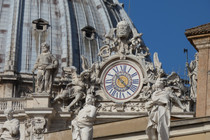





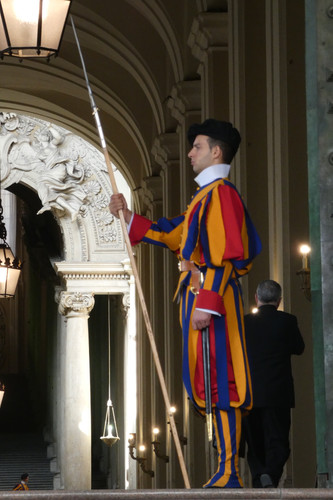







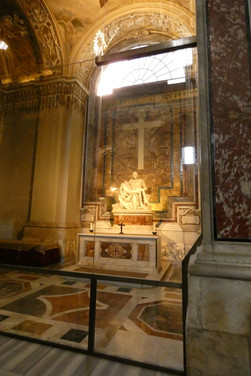











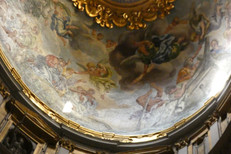









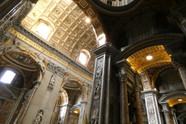

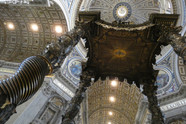









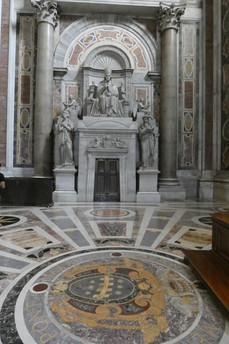



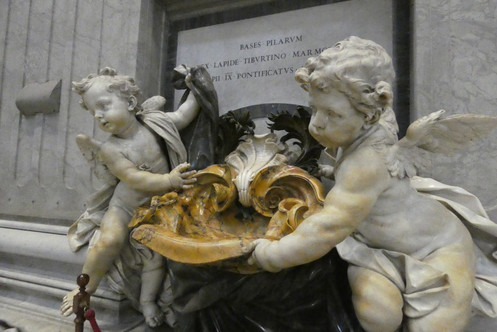







































































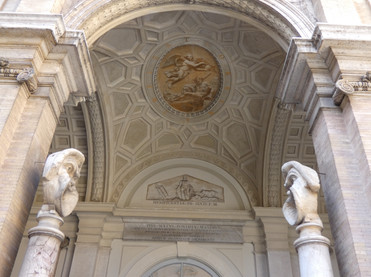























































































































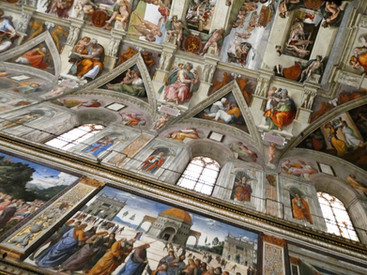













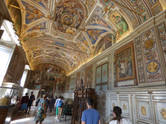





































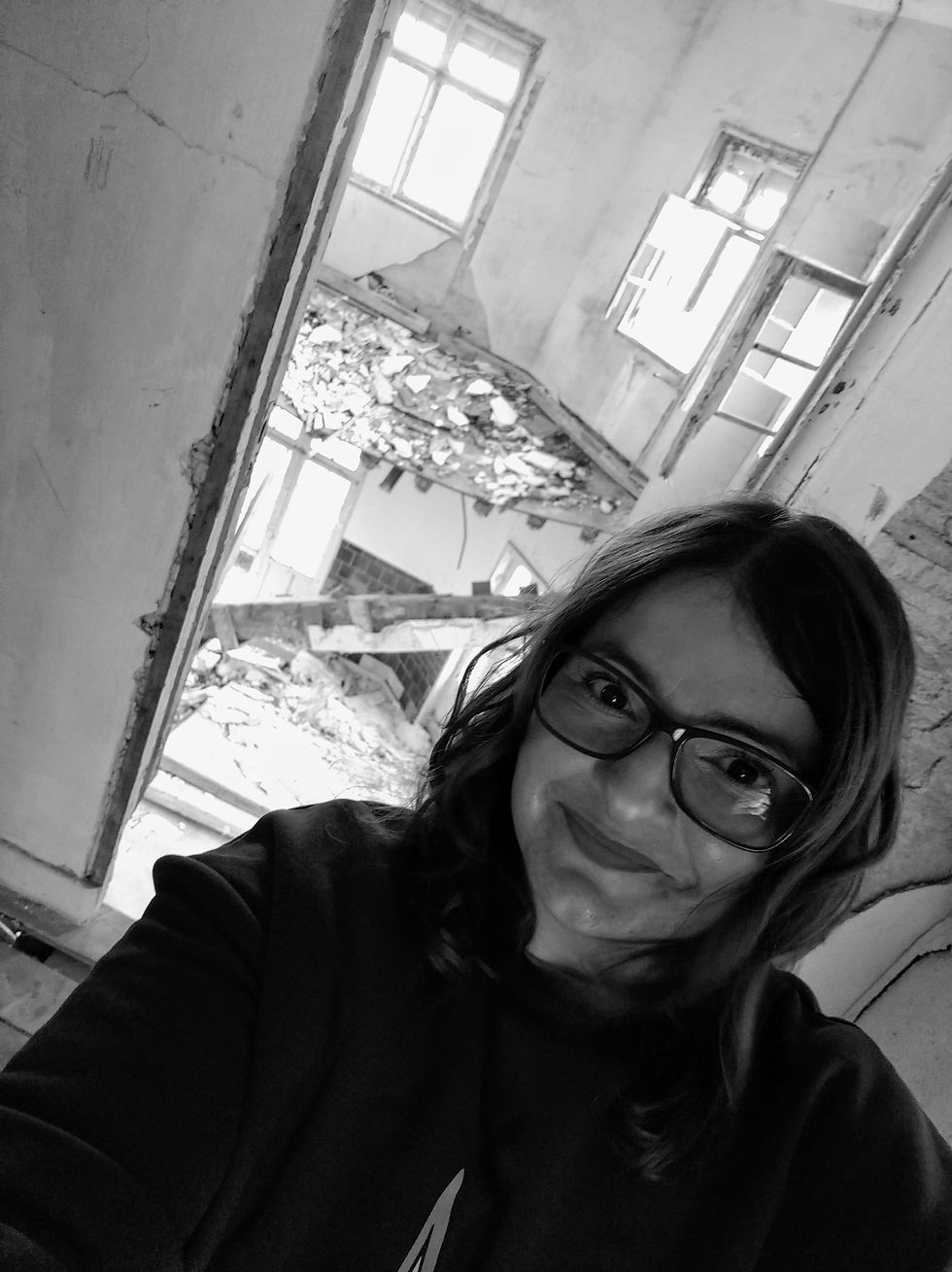

Comments